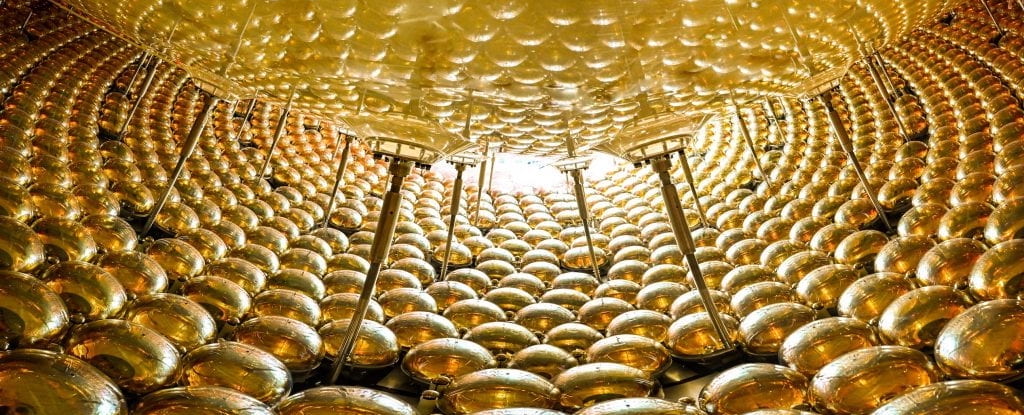
Neutrinos, often described as one of the most elusive particles in the standard model of particle physics, have long puzzled scientists due to their minimal interaction with normal matter. Despite the staggering fact that approximately 400 trillion neutrinos from the Sun pass through each person’s body every second, they rarely leave a trace, making them notoriously difficult to study. In a groundbreaking effort to unravel their mysteries, a new neutrino detector in China, the Jiangmen Underground Neutrino Observatory (JUNO), has commenced data collection, aiming to analyze between 40 and 60 neutrinos daily over the next decade.
JUNO is strategically located between two massive nuclear power plants, Yangjiang and Taishan, which produce artificial neutrinos alongside those naturally emanating from the Sun. This positioning ensures a rich environment of neutrinos for study, despite the detector being situated 700 meters underground. The Earth’s crust acts as a natural shield, blocking most other particles, such as muons, from reaching the detector, a method also employed by other installations like IceCube.
Innovative Design and Detection Techniques
The JUNO detector is enveloped by an additional layer known as the “Top Tracker,” which covers a 44-meter diameter pool of ultrapure water. Its role is to identify any stray particles that manage to penetrate to the detector’s depth. While it cannot prevent these particles from reaching the detector, it can eliminate the data artifacts they might create.
At the heart of the detector lies a “liquid scintillator” within a sphere surrounded by 43,212 sensitive photodetectors capable of capturing individual photons. By integrating data from these photodetectors, researchers can begin to discern the physical properties of neutrinos, including the differences among the three known types: electron, muon, and tau neutrinos. Each type exhibits unique characteristics and has the ability to oscillate, or shift, between forms, a phenomenon that particle physicists are keen to understand.
Scientific Goals and Potential Discoveries
One of JUNO’s primary objectives is to determine the mass of each neutrino type. Although this task is ambitious, researchers hope to at least establish the mass hierarchy—identifying which is the heaviest and which is the lightest. Another significant area of study is the frequency of their oscillation, or how often they change from one type to another.
Understanding neutrinos could unlock new insights into cosmology, as they are believed to have played a role in the universe’s early expansion during the Big Bang. Additionally, they hold potential in astrophysics, providing clues about supernovae, and in geology, given that radioactive rocks deep within the Earth emit them. This multifaceted importance is why scientists have dedicated substantial resources to studying these particles.
Global Collaboration and Future Prospects
JUNO represents a significant step forward in neutrino research, involving a collaboration of 74 institutes and 700 scientists, spearheaded by the Chinese Academy of Sciences’ Institute for High Energy Physics. The observatory is expected to operate for at least 10 years, during which it aims to gather enough data to shed light on the enigmatic characteristics of neutrinos. Success in this endeavor could have far-reaching implications across multiple scientific disciplines.
As JUNO embarks on its mission, the scientific community watches with anticipation. If the observatory can achieve its goals, it will not only enhance our understanding of neutrinos but also contribute valuable knowledge to the fields of cosmology, astrophysics, and geology, potentially leading to groundbreaking discoveries.







